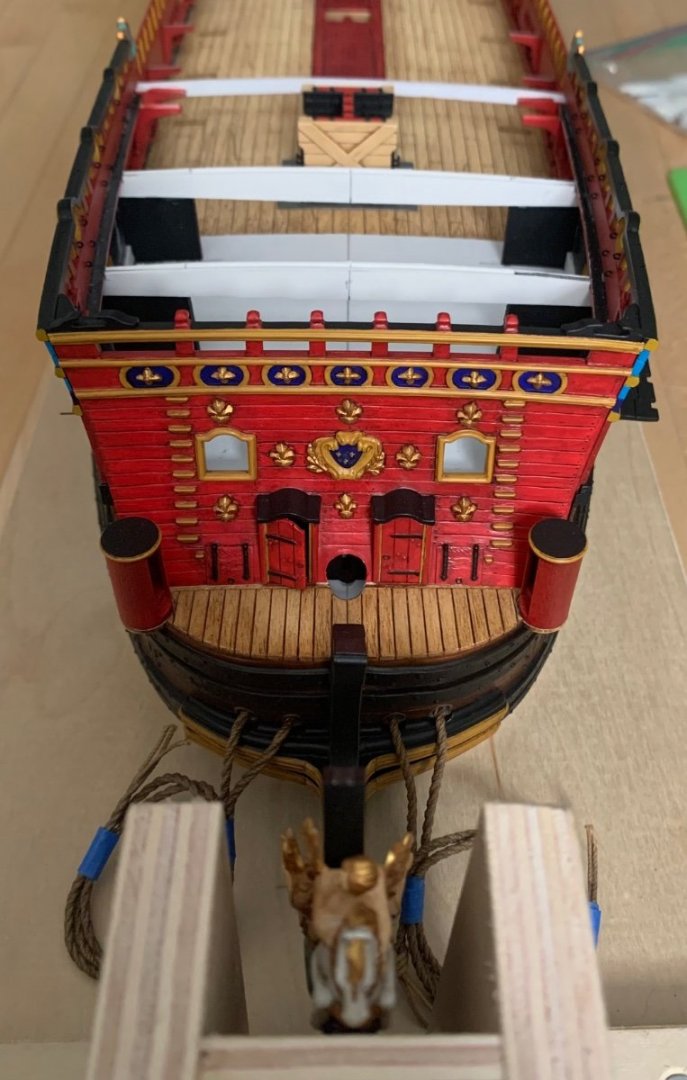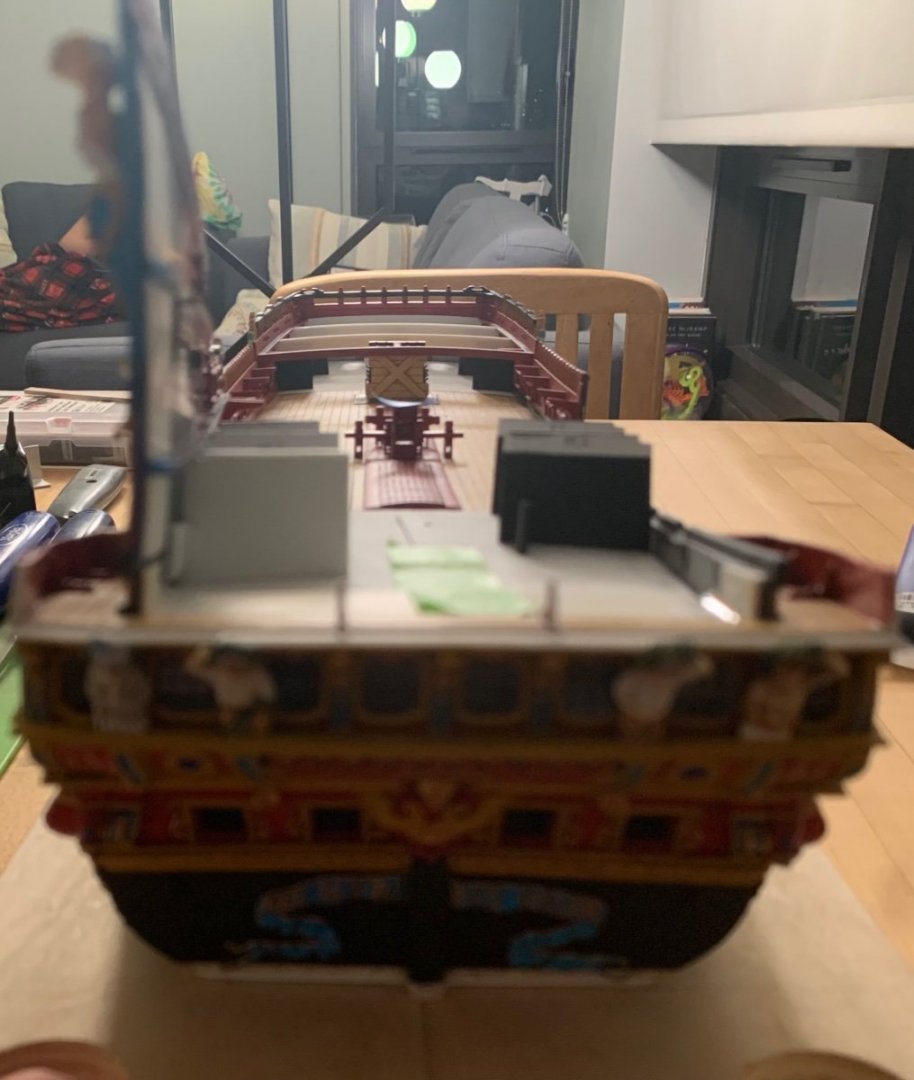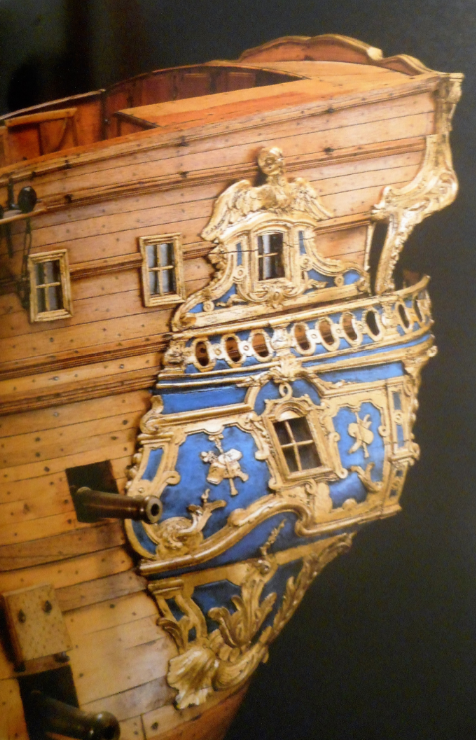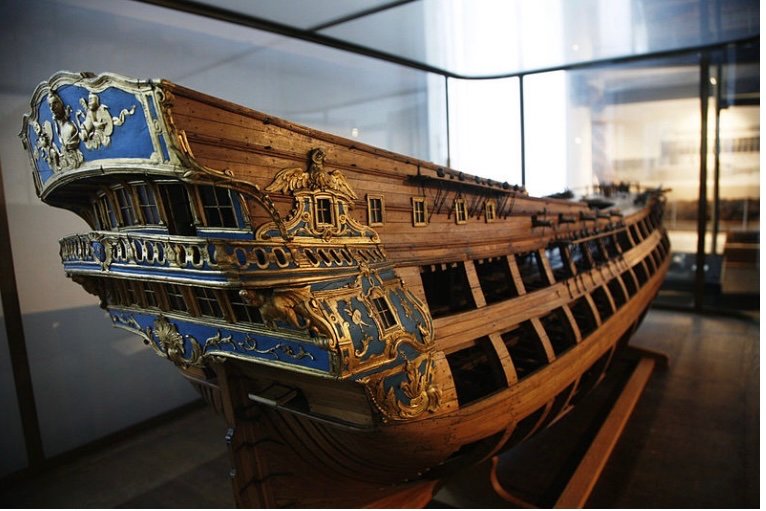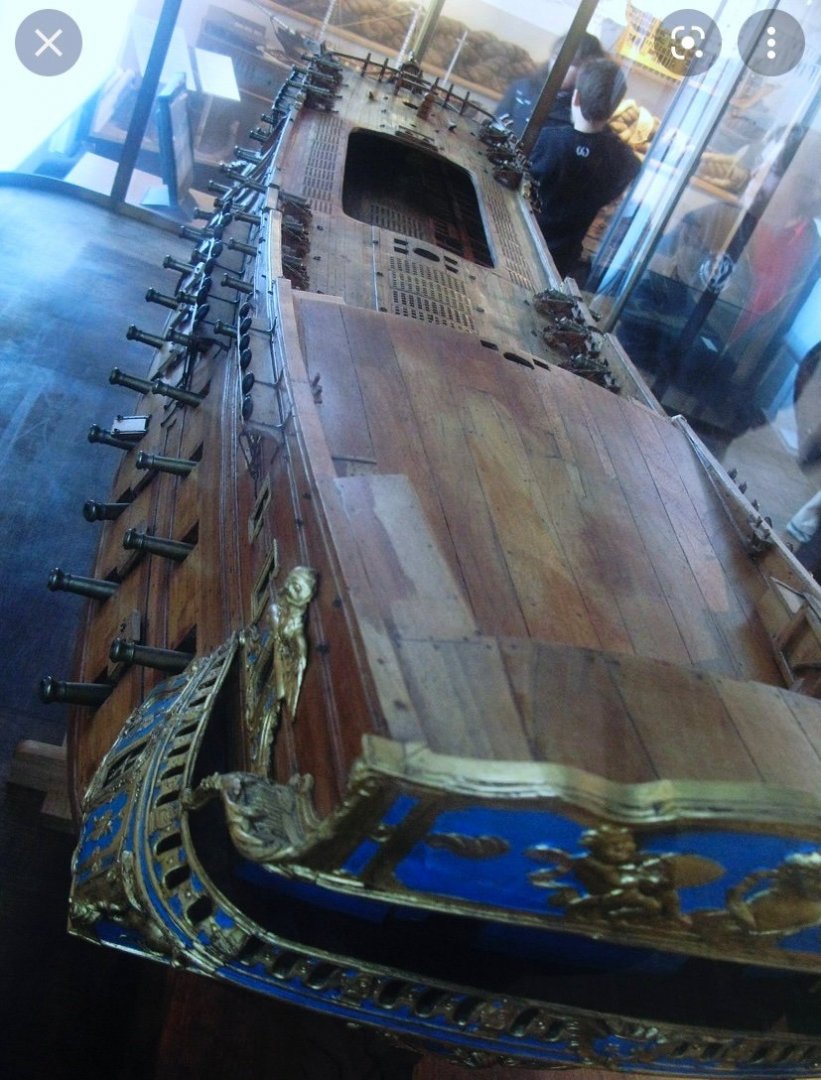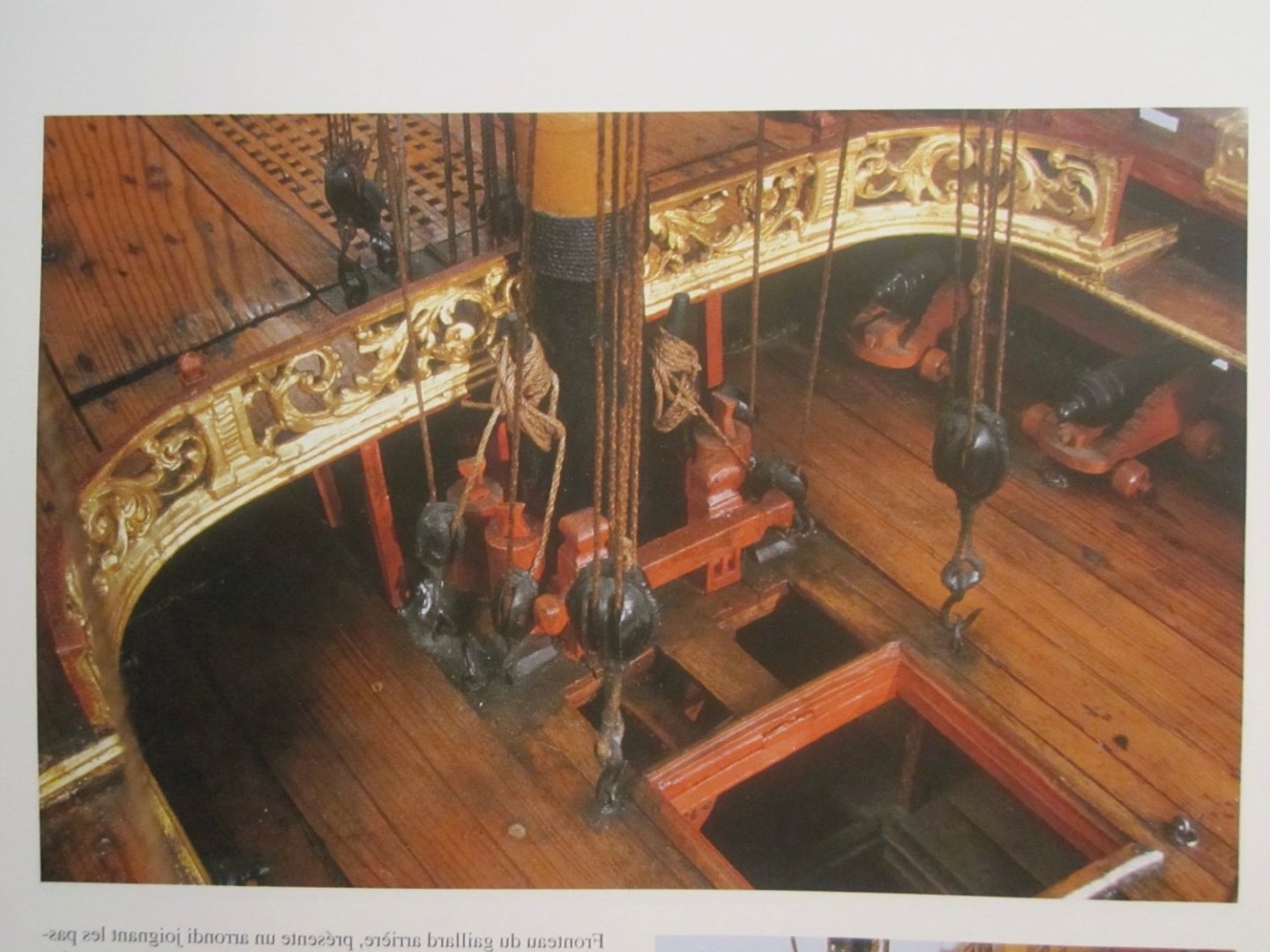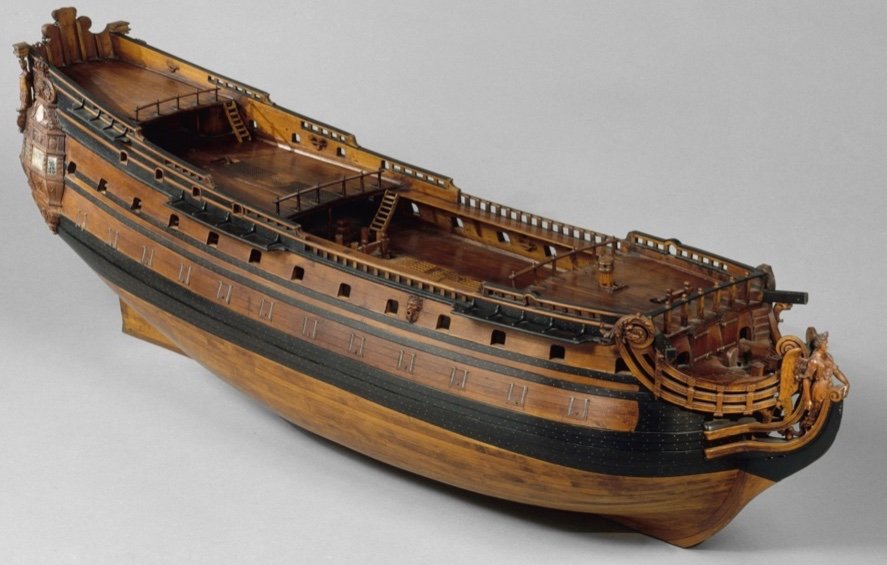-
Posts
3,305 -
Joined
-
Last visited
Content Type
Profiles
Forums
Gallery
Events
Everything posted by Hubac's Historian
-
Well, London may not be particularly tall, but it is sprawling. I remember being amazed by the sheer size of the place and the diversity of its different neighborhoods.
- 444 replies
-
- Cutty Sark
- Revell
-
(and 2 more)
Tagged with:
-
That is certainly something to consider, Druxey. I didn’t even know that exists until you mentioned it.
- 2,699 replies
-
- heller
- soleil royal
-
(and 9 more)
Tagged with:
-
Okay, well, that makes a ton of sense. Thank you for clarifying, Ian. I hope, some day, to visit her again. It was 1995, when I last passed through that area. The ship wasn’t open to visitors, back then, as I recall.
- 444 replies
-
- Cutty Sark
- Revell
-
(and 2 more)
Tagged with:
-
Well, not exactly - for the longest time, I had this pedestal lamp with a shade that swiveled up or down. It was a pretty cheap lamp, but it gave decent light, until the poor casting that connected the shade to the swivel just sheered off one day. We finally bought a grown-up lamp that does an excellent job of lighting the living room, but I still need that focused light for close work. All that being said, my eyes have changed significantly, since I began this project. My distance prescription has hardly changed, over a 10-year period, or more, but I can no longer focus up close with my glasses on. I suppose bifocals are in my near future.
- 2,699 replies
-
- heller
- soleil royal
-
(and 9 more)
Tagged with:
-
Thank you, Keith! Yes my whole modeling life happens on our kitchen table. I’ve even built a finely carved wall cupboard on that table. I’ve just purchased a clamp-able Swingline lamp, so my lighting will improve dramatically, very soon. Of course, one day in the future, I hope to have a little true shop space, at which time I will crossover to arsenal-style modeling. I feel you very strongly, re COVID. My Dad is 87, and I feel that COVID had very much to do with his mental decline, these last few years; the dementia was probably inevitable, but the pandemic likely accelerated that process. It is true that human-kind is killing the planet, though, and that all of these things are inter-connected. I was reminded, recently, of just how prescient a movie Soylent Green really was in the year that I was born. If one wants to make a DoomsDay Double Feature out of a Friday night, just add Mike Judge’s Idiocracy to the viewing queue. That movie used to be funny, now it’s just terrifying.
- 2,699 replies
-
- heller
- soleil royal
-
(and 9 more)
Tagged with:
-
I’m up to date, now, Kevin. I am fascinated by your inability to resist the well-trod path. I always liked this kit, and I can already see that you are going to transform it into something much better than the sum of its parts - because the model will be made, mostly, of your printed parts. The deck housing looks super-clean! Bon courage!, as the French say 👍
- 444 replies
-
- Cutty Sark
- Revell
-
(and 2 more)
Tagged with:
-
That is fascinating, as I was just recently marveling at the museum display of the ship, with viewers able to walk right below the ship. I thought the plating seemed extra-bright, but I figured that had more to do with the camera than the actual color. Richard, as you seem to be a Sark enthusiast, can you offer any insight into the engineering behind the current museum display; one would think that this kind of suspension might cause undue stress on an old wooden hull. Obviously, people much smarter than myself have put engineering thought into this, so I wonder how it works. Hands-down, though, it is a spectacular and inspiring display.
- 444 replies
-
- Cutty Sark
- Revell
-
(and 2 more)
Tagged with:
-
Thank you, Eric! Yes, that does seem to work whenever that server error pops up. This is just an alive’n kickin’ post to say that work has continued, albeit at a meager pace. I am starting, though, to regain some of my former momentum. I made the starboard channels, and I have all of the ground colors painted for the starboard, aft bulwark. I won’t bother posting pictures of those items until they are installed on the model, as it is nothing new to see. Last night, I made and installed the lam-beams for the forecastle deck: Tonight, I can sand them fair and then make a cardboard pattern for the forecastle deck. More to follow. Try not to let COVID overwhelm your thoughts and emotions - despite the grind we are living through now, life won’t always be like this. All the best, Marc
- 2,699 replies
-
- heller
- soleil royal
-
(and 9 more)
Tagged with:
-
From what I’ve seen, Ian, the moulding of the sculpture work is not nearly as well-done as on the Airfix version, but then they did include the sheer rail extensions for the fighting cloths.
-
I watched you build it, in fact. I kept my spare pressing of this kit because I aborted the first version I was making of it, during one of my several moves. This was after the true paint scheme was discovered, and I had painted my upper bulwarks blue. Also, the model had been under construction for so long that many of the guns had broken off, as well as the quarter gallery turrets. This is why I am now maniacal about plastic to plastic bonds.
-
The duplicate notifications you are seeing Bill are only because I kept hitting the LIKE button, as I read my way back to present times. If you click on any one of those notifications, it will automatically redirect you to the specific post I was liking. It’s kind of a neat feature of the site. The masts look very impressive, indeed! That is always a rewarding feeling, as she becomes a sailing ship. I noticed in one of your earlier posts, that the mastheads appear to be separate parts from the lower masts. That is interesting that Heller did that. I would think, for the sake of strength, that it would be better if the mast heads were moulded to the lower masts. I wonder why they did that. As we clear out my father’s house, for sale, I had to figure out what to do with what’s left of my plastic kit stash. I have an Airfix Vasa, and the Heller Vic. For the time being, my sister took them over to her place because she has storage, there. I’ve been transporting that Victory to different homes since 1995! I also have the Airfix Prince, but that’s with me, in Brooklyn - that’s a gem of a kit!
-
Life has kept me busy, so I haven’t been around much, lately. I think I’m easing back into a little more free time, though, so I should be more present.
-
I’m just catching up, here, and am enjoying the discussion of rigging sequence and fall tie-offs. It is all fascinating and there have been many practical tips shared that I will take with me when the time comes. Bill, your log explodes with activity and I was amazed by how far back I was! I admire your fortitude in rectifying errors. It is all looking splendid!!
-
I almost forgot this other contemporary model from the circa 1740s: No inboard ladders either Interestingly, Le Fleuron shows an outboard stanchion railing that is higher than the waist sheer railing, but nothing in-board, along the gangway. Also, the Dauphin Royal of 1750 does not show any inboard stanchion railings, either.
-
The closest contemporary resource I can find is the Louis Quinze model at the Musee de la Marine. These are the best pictures I have (admittedly not great), but in-board railings are not shown, along the gangways: It’s another Tanneron model, from the 1830’s, but his more complete (than SR) model of Le Brillant does not show railings either:
-

Roter Löwe 1597 by Ondras71
Hubac's Historian replied to Ondras71's topic in - Build logs for subjects built 1501 - 1750
Wishing all the same for you, Ondras! -
Wonderful update, Radek! Some really nice progress, there, even if it may feel like a step back to move forward.
About us
Modelshipworld - Advancing Ship Modeling through Research
SSL Secured
Your security is important for us so this Website is SSL-Secured
NRG Mailing Address
Nautical Research Guild
237 South Lincoln Street
Westmont IL, 60559-1917
Model Ship World ® and the MSW logo are Registered Trademarks, and belong to the Nautical Research Guild (United States Patent and Trademark Office: No. 6,929,264 & No. 6,929,274, registered Dec. 20, 2022)
Helpful Links
About the NRG
If you enjoy building ship models that are historically accurate as well as beautiful, then The Nautical Research Guild (NRG) is just right for you.
The Guild is a non-profit educational organization whose mission is to “Advance Ship Modeling Through Research”. We provide support to our members in their efforts to raise the quality of their model ships.
The Nautical Research Guild has published our world-renowned quarterly magazine, The Nautical Research Journal, since 1955. The pages of the Journal are full of articles by accomplished ship modelers who show you how they create those exquisite details on their models, and by maritime historians who show you the correct details to build. The Journal is available in both print and digital editions. Go to the NRG web site (www.thenrg.org) to download a complimentary digital copy of the Journal. The NRG also publishes plan sets, books and compilations of back issues of the Journal and the former Ships in Scale and Model Ship Builder magazines.




